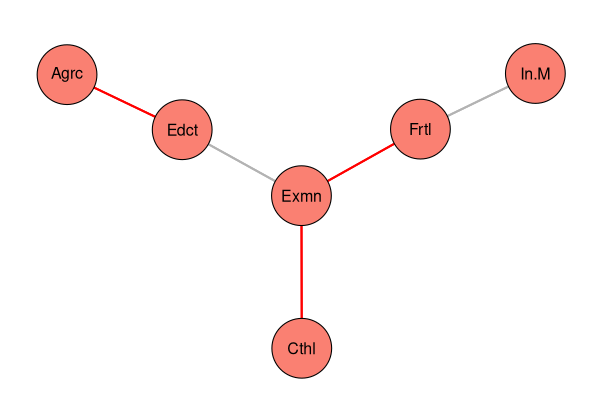R package which implements the St. Nicolas House Algorithm (SNHA) for constructing networks of correlated variables using a ranking of the pairwise correlation values. The package contains the R code for the papers:
- Groth, D., Scheffler, C., & Hermanussen, M. (2019). Body height in stunted Indonesian children depends directly on parental education and not via a nutrition mediated pathway-Evidence from tracing association chains by St. Nicolas House Analysis. Anthropologischer Anzeiger, 76(5), 445-451. https://doi.org/10.1127/anthranz/2019/1027
- Hermanussen, M., Aßmann, C., & Groth, D. (2021). Chain Reversion for Detecting Associations in Interacting Variables—St. Nicolas House Analysis. International journal of environmental research and public health, 18(4), 1741 https://doi.org/10.3390/ijerph18041741
For an implementation of the algorithm in Python look here https://github.com/thake93/snha4py.
Either install the package directly from CRAN as usually:
install.packages('snha')
Or to use the latest version from the Github repository install it like this:
library(remotes)
remotes::install_github("https://github.com/mittelmark/snha")
Thereafter you can check the installation like this:
library(snha)
citation("snha")
Which should display something like this:
> citation("snha")
To cite package 'snha' in publications use:
> citation("snha")
To cite package ‘snha’ in publications use:
Detlef Groth, University of Potsdam (2023). snha: St.
Nicolas House Algorithm for R. R package version 0.1.3
...
As there are currently no differences between the CRAN and the Github repository the CRAN install is the recommended way.
The package has a function snha where you give your data as input. The
function creates an object of class snha which you can plot and
explore easily. Here an example just using the swiss data which are part of
every R installation:
> library(snha)
> library(MASS)
> data(swiss)
> colnames(swiss)=abbreviate(swiss)
> as=snha(swiss,method="spearman")
> plot(as)
> plot(as,layout="sam",vertex.size=8)
> ls(as)
[1] "alpha" "chains" "data" "method"
[5] "p.values" "probabilities" "sigma" "theta"
[9] "threshold"
> as$theta
Frtl Agrc Exmn Edct Cthl In.M
Frtl 0 0 1 0 0 1
Agrc 0 0 0 1 0 0
Exmn 1 0 0 1 1 0
Edct 0 1 1 0 0 0
Cthl 0 0 1 0 0 0
In.M 1 0 0 0 0 0
The theta object contains the adjacency matrix with the edges for the found
graph. For more details consult the package vignette:
vignette(package="snha","tutorial") or the manual package of the package
?snha or ?'snha-package'.
Author: Detlef Groth, University of Potsdam, Germany
License: MIT License see the file LICENSE for details.
The following persons have contributed to the package with ideas, testing, etc.:
- Michael Hermanussen (Aschauhof, the algorithm idea)
- Masiar Novine (University of Potsdam, evaluating different data generation methods and comparing the algorithm swit other approaches)
- Tim Hake (University of Potsdam, Python port and critical discussions about directed edges)
- Bernhard Bodenberger (University of Potsdam, evaluating the bootstrap performances and different parts of the algorithm)
- Cedric Moris (University of Potsdam, evaluating different extensions of the basic algorithm)
In case of bugs and suggestions, use the issues link on top.
